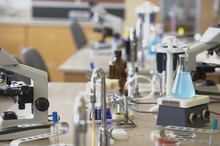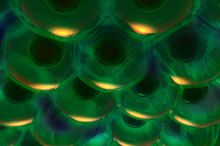What Is Synthetic Protein?
Synthetic proteins are man-made molecules that mimic the function and structure of true proteins 15. Proteins are central to life because they control almost all cellular processes, including initiating most of the reactions that occur in living cells. In early 2011, Princeton University scientists built the first artificial proteins capable of sustaining life in cells 3.
Significance
Synthetic proteins have genetic sequences that are not seen in natural proteins 4. Building an artificial protein that can sustain life is significant because it proves the molecular parts needed for life are not limited to the proteins and genes found in nature. In nature, proteins are produced from the instructions that are encoded into cellular DNA. Researchers have long sought synthetic proteins that act like natural proteins for a range of biomedical applications, including therapeutic drugs that can be given orally because they won’t be degraded by enzymes.
Prior to the 2011 breakthrough, Yale University researchers did groundbreaking work in which they created proteinlike structures that had many hallmarks of real proteins. These include exceptional stability, the ability to fold and unfold, and an interior core of amino acid side chains that shun water.
- Synthetic proteins have genetic sequences that are not seen in natural proteins 4.
- Researchers have long sought synthetic proteins that act like natural proteins for a range of biomedical applications, including therapeutic drugs that can be given orally because they won’t be degraded by enzymes.
Components
What Are Protein Polymers?
Learn More
A protein’s identity and biological activity are dictated by its unique sequence of amino acids, which are the building blocks of protein. There are about 20 amino acids. Amino acids, in turn, contain atoms including hydrogen, carbon, nitrogen, oxygen and sulfur. Amino acids also can be synthetically made. The research at Princeton opens the door to the possibility of creating synthetic proteins that carry out the same functions as natural proteins. Princeton researcher Michael Fisher likens this to taking a sentence, changing the words and then testing the sentence to see if it retains its meaning despite the new words, notes the university’s online publication, News at Princeton.
- A protein’s identity and biological activity are dictated by its unique sequence of amino acids, which are the building blocks of protein.
- The research at Princeton opens the door to the possibility of creating synthetic proteins that carry out the same functions as natural proteins.
Folding
The amino acid sequences in each protein dictate how the protein folds into a three-dimensional structure, which in turn affects the stability of the structure. Proteins must fold to function. Creating synthetic proteins may help researchers understand this biological process. Understanding this process may unlock the knowledge researchers need to understand conditions such as Alzheimer's disease, as errant folding of proteins in your brain can lead to this condition. Understanding how proteins fold also may help researchers find compounds that will prevent errant folding of proteins.
- The amino acid sequences in each protein dictate how the protein folds into a three-dimensional structure, which in turn affects the stability of the structure.
- Understanding how proteins fold also may help researchers find compounds that will prevent errant folding of proteins.
Unanswered Questions
What Are the Benefits of Peptides?
Learn More
Researchers working on synthetic proteins also hope to understand why certain amino acid sequences are central to human existence, according to "Genetic, Engineering and Biotechnology News." The human body produces about 100,000 different proteins 4. However, the Princeton research demonstrates that there is the potential for many more. The question of whether these 100,000 proteins are somehow special or whether evolution simply has not progressed to make more varieties remains unanswered.
Creating synthetic proteins also may help researchers learn more about cell signaling and immune responses to pathogens, according to the University of Illinois.
- Researchers working on synthetic proteins also hope to understand why certain amino acid sequences are central to human existence, according to "Genetic, Engineering and Biotechnology News."
Related Articles
References
- Chemical and Engineering News: Synthetic Protein Mimics the Real Thing
- University of Arizona : The Chemistry of Amino Acids
- Princeton University: Princeton Scientists Construct Synthetic Proteins That Sustain Life
- Genetic, Engineering and Biotechnology News: Synthetic Proteins That Sustain Life Created
- University of Illinois: Synthetic Protein Mimics Structure, Function of Metalloprotein in Nature
- The National Academies of Sciences, Engineering and Medicine, Health and Medicine Division. "Dietary Reference Intakes Tables and Application."
- United States Department of Agriculture Agricultural Research Service. National Nutrient Database for Standard Reference Release 28.
- Gropper SS, Smith JL, Groff JL. "Advanced Nutrition and Human Metabolism." Sixth Edition. Belmont, CA. Wadsworth Publishing Company, 2013.
- Smolin LA, Grosvenor, MB. "Nutrition: Science and Applications." Third Edition. Wiley Publishing Company, 2013.
Writer Bio
Linda Tarr Kent is a reporter and editor with more than 20 years experience at Gannett Company Inc., The McClatchy Company, Sound Publishing Inc., Mach Publishing, MomFit The Movement and other companies. Her area of expertise is health and fitness. She is a Bosu fitness and stand-up paddle surfing instructor. Kent holds a bachelor's degree in journalism from Washington State University.









